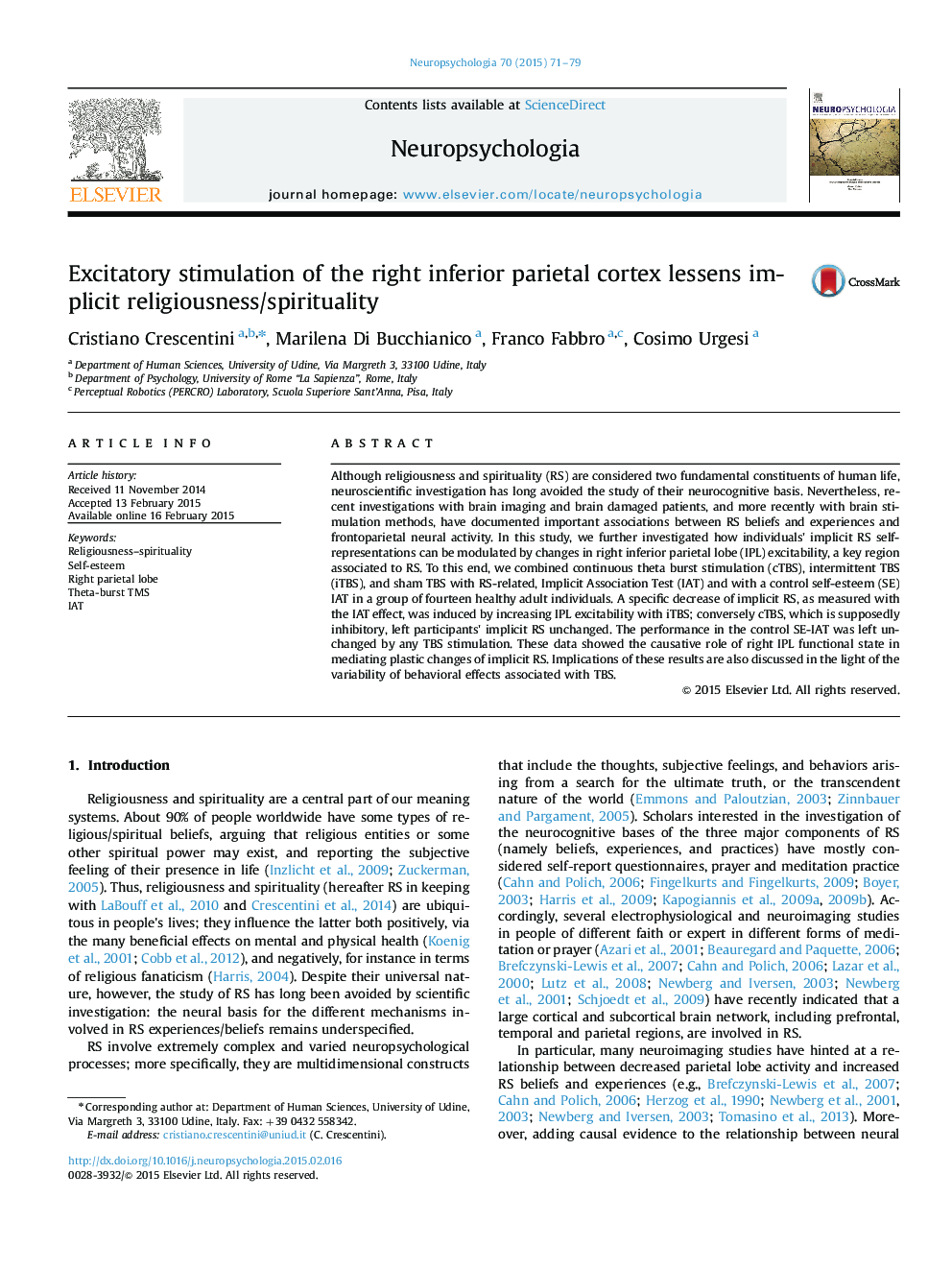| Article ID | Journal | Published Year | Pages | File Type |
|---|---|---|---|---|
| 7320393 | Neuropsychologia | 2015 | 9 Pages |
Abstract
Although religiousness and spirituality (RS) are considered two fundamental constituents of human life, neuroscientific investigation has long avoided the study of their neurocognitive basis. Nevertheless, recent investigations with brain imaging and brain damaged patients, and more recently with brain stimulation methods, have documented important associations between RS beliefs and experiences and frontoparietal neural activity. In this study, we further investigated how individuals' implicit RS self-representations can be modulated by changes in right inferior parietal lobe (IPL) excitability, a key region associated to RS. To this end, we combined continuous theta burst stimulation (cTBS), intermittent TBS (iTBS), and sham TBS with RS-related, Implicit Association Test (IAT) and with a control self-esteem (SE) IAT in a group of fourteen healthy adult individuals. A specific decrease of implicit RS, as measured with the IAT effect, was induced by increasing IPL excitability with iTBS; conversely cTBS, which is supposedly inhibitory, left participants' implicit RS unchanged. The performance in the control SE-IAT was left unchanged by any TBS stimulation. These data showed the causative role of right IPL functional state in mediating plastic changes of implicit RS. Implications of these results are also discussed in the light of the variability of behavioral effects associated with TBS.
Keywords
Related Topics
Life Sciences
Neuroscience
Behavioral Neuroscience
Authors
Cristiano Crescentini, Marilena Di Bucchianico, Franco Fabbro, Cosimo Urgesi,
